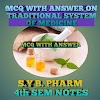S.Y B.PHARM SEMESTER III
PHARMACEUTICAL MICROBIOLOGY PRACTICAL
EXPERIMENT NO. 07
SPREAD PLATE TECHNIQUE- PRINCIPLE, PROCEDURE, OBSERVATION, RESULT,
ADVANTAGES, DISADVANTAGES, PRECAUTION
AIM: -
To carry out isolation of pure culture using spread plate technique.
REFERENCE:
-
1. Experimental
Microbiology book (As Per PCI Syllabus) by Savita Mandan, Umesh Laddha, Sanjay
Surana, Published by Career Publication, First edition, Page No 73 - 75.
2. Pharmaceutical
Microbiology (As Per PCI Regulation) by Prof Chandrakant Kokare, Published by
Nirali Prakashan, First Edition, Page No. 4.3 – 4.4
SPREAD PLATE METHOD/LAWN METHOD
INTRODUCTION: -
The spread plate method is a technique to plate a liquid sample
containing bacteria so that the bacteria are easy to count and isolate. This technique
used to separate the microorganisms from a mixed culture. Sample which is
spread over the surface of an agar plate. Samples are diluted for separation
and isolation of individual bacterial colony. A successful spread plate will have a countable number
of isolated bacterial colonies evenly distributed on the plate.
Spread plate culture technique is among the most widely used
culture technique for isolating the bacteria.
REQUIREMENTS:
-
CULTURE:
- 24 hrs cultures of Escherichia coli, Staphylococcus album, Bacillus subtilis or any
other soil isolated culture.
CHEMICALS:
- Beef extract, Peptone, NaCL, Agar-Agar, 95% alcohol.
APPARATUS: - Sterile Petri dishes,
inoculating nichrome wire loop, burner, marking pen, L-shaped bent glass rod
EQUIPMENTS: - Autoclave, Colony
Counter with magnifyin g glass, Hot air Oven, Incubator, Balance, pH meter.
PRINCIPLE OF SPREAD PLATE METHOD: -
In spread plate method a serially diluted sample containing mixed micro-organisms (mixed
culture) is used which is spread over the solidified agar media plates with the
help of a sterile L-shape glass rod (Spreader) for the purpose of isolating or counting the specific
micro-organism/ bacteria present in that sample. A perfect spread
plate technique will results visible and isolated colonies of bacteria that are
evenly distributed in the plate and are countable.
PROCEDURE OF SPREAD PLATE METHOD: -
1.
Prepare the nutrient agar plate and
labelled it with respective organisms like Staphylococcus
aureus, Staphylococcus album,
Bacillus subtilis or other.
2.
Make a dilution series from a sample.
3.
Pipette out 0.1 ml from the appropriate desired dilution series
& aseptically transfer a in respective Petri containing media.
4.
Take a 95% alcohol into the beaker and
sterile the bent portion of glass rod and then pass on the flame of busen
burner.
5. Cool the rod for 15-20 seconds.
6. Tilt the lid of plate and lightly touch the sterile rod to the agar surface and uniformly spread the sample evenly over the surface of agar using the sterile glass spreader, carefully rotating the Petri dish underneath at the same time.
7. Immerse the bent rod in alcohol and reflame to sterilize it on the flame of busen burner
8. Repeat the same steps and inoculate the bacterial sample in remaining two plates.
9. Incubate the all plates in an inverted position at 25°C for 24 to 48 hours.
10. Calculate the CFU value of the sample. Once you count the colonies, multiply by the appropriate dilution factor to determine the number of CFU/mL in the original sample.
OBSERVATION AND RESULTS: -
Few colonies may be separate while rest of colonies
are may be in bunch, Record the result of colonies their form, elevation,
pigment formation by colonies and their size,
Results:- Isolated
colonies are appeared on the surface of nutrient agar plate.
ADVANTAGES OF SPREAD PLATE METHOD: -
1.
Spread plate method is useful for
isolation of aerobic microorganisms.
2.
Bacterial culture is not exposed to high
temperature as compare to pour plate method hence heat sensitive microbes are not
affected.
3.
In spread plate colonies appear only on surface of media, no
subsurface colonies appear so isolation of the organism is easy.
DISADVANTAGES SPREAD PLATE METHOD:
1.
Spread plate method allows the growth of
other microbes along with desired Microbes
2.
In this method the volume of sample not greater than 0.1 ml can be
spread on the nutrient agar plate because it would not soak well and may result
in colonies to coalesce as they form
3.
Spread plate method allows the growth of
obligate anaerobic microorganisms.
4.
Accurate dilutions using pipettes should be made.
PRECAUTION: -
1.
Volume of sample that to be spread on
media should not be more than 0.1 ml.
2.
The culture never exposed to 45°c
temperature.
3.
Surface of plate must be dry.













0 Comments
Please do not enter any spam link in the comment box.